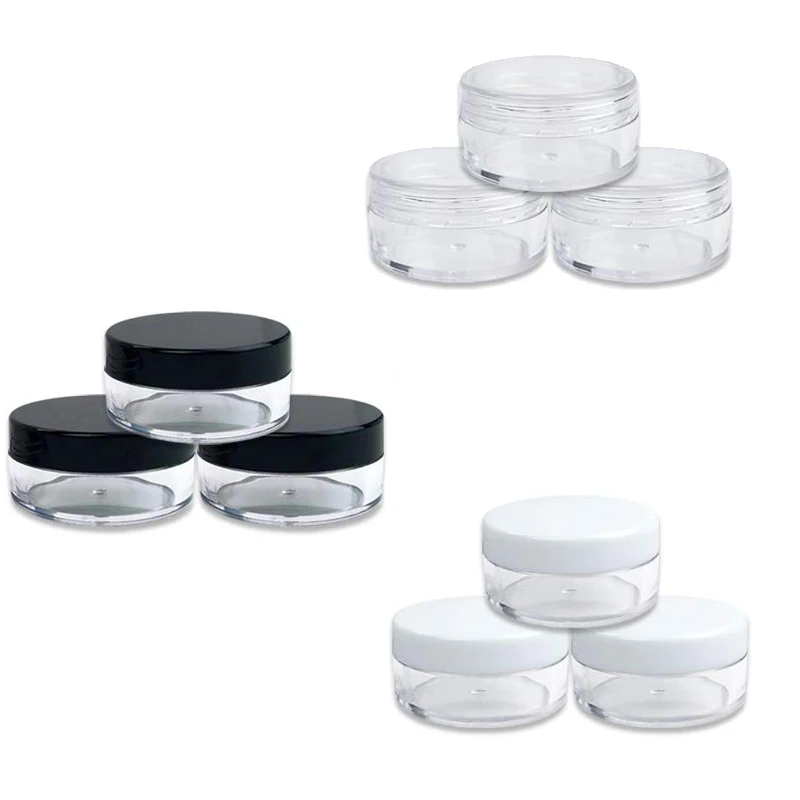

- Empty makeup containers glass how to#
- Empty makeup containers glass skin#
- Empty makeup containers glass upgrade#
What if you still don’t like the products you’ve tried? Give them away or pass them on to a friend! Check local charities, nonprofits, and homeless or women’s shelters - these organizations may be looking for skincare products. creams that are too thick can be used on the hands and feet serums that make you break out can be used on your neck and chest. Scrubs that are too harsh for your face can be great for exfoliating your body. However, you don’t have to throw away the products you don’t like. It’s all about the experience and the learning process. When you learn what works for your skin, it’s almost inevitable that you’ll try a product you don’t like. Find alternative uses for what doesn’t work Why? Because these pumps usually cannot be recycled, even though the rest of the container can. However, if your favorite product does not come in these types of packaging, you can always try to avoid buying products with plastic pumps. Instead, they come in compostable packaging and reduce water waste. These bars can be soap, shampoo, conditioner, etc., and they don’t need plastic wrappers. This means our favorite products come in packages that can be refilled and reused over and over again!īeauty bars are another low-waste trend we’re seeing in the clean skincare space. Luckily for us, rechargeable beauty and skincare is on the rise. If you can’t find glass, look for recyclable plastic or containers you can reuse or refill. A great alternative is glass bottles, like products from The youth to the people. Most products come in non-recyclable plastic containers, which most of us try to avoid. This is probably the first step that comes to mind when you think of low-waste skincare. There are even tools available that help you eliminate every last drop.

In addition to saving you money, it avoids waste! Plus, it can also help you clean the inside of those tubes, so you can properly dispose of them when the time comes. favorite, I strongly recommend that you cut the tubes and use the rest of the product. You have no idea how much product is left in the containers you think are empty! If you reach the end of your lotion, cleanser, etc.

This little tip saved me so a lot of money.
Empty makeup containers glass how to#
Now I only buy large containers of products that I like and know how to use before the expiration date.
Empty makeup containers glass upgrade#
Many of the products I purchased in bulk expired before I could use them or I decided to upgrade to a new product, which meant I wasted money and added After waste to landfill. After all, buying in bulk is usually cheaper – and I figured it was better for the environment to have one big container instead of a bunch of small ones. My first instinct when I started my skincare routine was to buy huge containers of the products I used.
Empty makeup containers glass skin#
Not only do small steps prevent waste from ending up in the landfill, it also prevents skin irritation and saves you money. You can add more products later depending on your specific skin concerns, but remember to only add one product at a time. And the cool part? You can now opt for a zero-waste sunscreen that preserves your skin and protects the planet. That’s it! I use cleanser and moisturizer morning and night, and sunscreen is applied every morning (that’s the most important part!). I’ve found that the best skincare routine for me only requires a gentle cleanser, moisturizer, and sunscreen. It seems like everyone is telling us that we need serums, toners, essences, eye creams, lip masks and more serums to get the perfect routine for clear, dewy skin. Navigating skincare in the era of TikTok influencers and millions products on the market is not easy. Here are my 10 steps to creating a low-waste skincare routine.

Needless to say he is possible to implement a routine that is good for your skin, your wallet and the environment. I took my values of wanting to reduce waste and improve the environment and combined them with my daily routines to find the methods that work for my skin and personal needs. That’s how I came up with my skincare routine. According to the Environmental Protection Agency (EPA), containers and packaging, including containers for cosmetics and personal care items, are made about 82.2 million tons of municipal solid waste (MSW) generation in 2018. The skincare and cosmetics industry generates a significant amount of waste, from single-use plastic bottles and containers to microplastics and harmful chemicals in our scrubs. Rather, it’s about adopting behaviors and habits that work for you. However, I quickly realized that perfection is not the key to success when it comes to sustainability. Looking to start or improve your skincare routine? Are you overwhelmed with product options and wondering if it’s possible to take care of your skin in a sustainable way? With years of experience and many mistakes, I was once in your shoes.


 0 kommentar(er)
0 kommentar(er)
